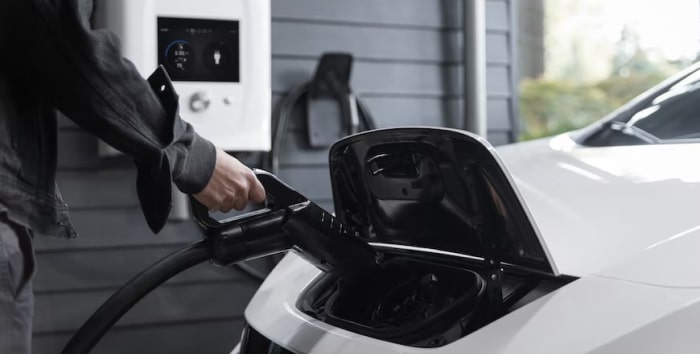The Truth About Car Solar Battery Chargers
Are you tired of constantly having to jump start your car battery or recharge it at an inconvenient time? A car solar battery charger may seem like the perfect solution for you. But, do these chargers actually work and are they worth the investment?
What are Car Solar Battery Chargers?
A car solar battery charger is a device that uses the power of the sun to recharge a car battery. The device is typically made up of a solar panel and a charge controller.
The solar panel absorbs sunlight and converts it into electrical energy, which is then stored in the battery by the charge controller.
How Do Car Solar Battery Chargers Work?
The process of using a solar battery charger to recharge a car battery is fairly simple. First, the solar panel is placed in an area that receives direct sunlight.
The panel absorbs the sunlight and converts it into electrical energy. The charge controller then takes the electrical energy and stores it in the battery.
It is important to note that car solar battery chargers are not designed to replace the car’s alternator. Instead, they are meant to provide a slow and steady charge to the battery to help maintain its charge level and extend its life.
Advantages of Car Solar Battery Chargers
There are several advantages to using a car solar battery charger:
- Convenient: The charger can be left in the car, so there’s no need to take the battery out for charging.
- Eco-Friendly: The charger runs on solar power, so it is an environmentally friendly solution.
- Cost Effective: Solar energy is free, so there is no cost to operate the charger.
- Portable: The charger is small and lightweight, making it easy to take with you on the road.
Disadvantages of Car Solar Battery Chargers
Despite the advantages, there are also some disadvantages to consider:
- Slow Charging Time: Solar panels provide a slow and steady charge, so it may take several hours to fully recharge a car battery.
- Weather Dependent: The charger only works when there is direct sunlight, so it may not work on cloudy or rainy days.
- Limited Power: The amount of energy that can be stored in a car battery using a solar charger is limited, so it may not be sufficient for cars with large power requirements.
Are Car Solar Battery Chargers Worth the Investment?
The decision to invest in a car solar battery charger ultimately depends on your specific needs and circumstances.
If you are looking for a convenient and eco-friendly solution to maintain the charge level of your car battery, then a solar charger may be worth the investment.
However, if you need a quick and powerful solution to recharge your battery, then a traditional car battery charger may be a better option.
Frequently Asked Questions
Are solar battery chargers safe?
It is completely safe to leave your solar battery charger plugged in for extended periods of time. Most commercial chargers are equipped with overcharge protection, so there is no risk of damaging the device.
Are solar battery maintainers safe?
Leaving the battery maintainer connected overnight poses no threat to your battery as it won’t drain it. Instead, it continually charges the battery by slowly adding a small amount of charge, ensuring that the battery remains topped up until it is used again. This “trickle charge” technique is safe and does not cause overcharging damage to the battery.
Can you jump start a car with a solar battery?
Surviving a freezing winter requires a reliable car that starts in the harshest conditions. Gregg Distributors LP’s selection of SOLAR products ranges from compact boosters that fit in your glove box to 3000-peak-amp boosters for large fleets. Rest assured, thye have everything you need to ensure a stress-free drive on those -35C highways.
Know more
Is it worth having a car battery charger?
A car battery charger is the only solution for fully charging a car battery. If your battery frequently drains and you need a tool to refill it, invest in a charger. Jump starters only provide sufficient power to start the car, not to fully charge the battery.
What are the 2 major drawbacks to solar power?
The drawbacks of solar energy include its dependence on sunlight, the need for large amounts of land, and the reliance on rare materials for certain solar technologies.
What are 3 negatives about solar energy?
1. The substantial initial expenditure for panel installation.
The cost of solar energy systems is a commonly cited disadvantage, although this is becoming less of an issue as the industry grows. The initial investment for buying and installing the equipment can be high, but leasing options may lower the upfront costs. However, it is a long-term investment that is better suited for property owners rather than renters. They need to live in their homes for several years before they can see a return on their investment.
2. The cost of storing solar energy can be substantial.
Another disadvantage of solar energy is the cost of energy storage, which has decreased with advances in battery technology. The decline in energy production during poor weather conditions has been a major issue, but this has been addressed with the advent of new battery technologies such as lithium ion, nickel-based and flow batteries.
3. Solar panels may not be compatible with all roof designs.
Not all roofs are suitable for solar panels, and orientation plays a key role. If a roof does not face the sun, it won’t be able to capture enough solar energy. Sloped roofs facing the sun tend to work better than flat roofs. The type of roofing material also affects the ease of installation and cost, with asphalt shingles, metal and tiles being easier to work with than other materials. Energy-efficient roofs are also better suited for supporting solar panels.
Why solar car is not widely used?
The low efficiency of solar cells adds to the many challenges such as cloudy weather, haze, and low sun angles, which can prevent the generation of sufficient electricity to optimally charge the batteries. Additionally, there is a limited space for installing solar cells in vehicles, which is another major concern.
What happens to solar power when batteries are full?
If the battery bank reaches capacity, it will cease to absorb power from the solar system. Despite this, the solar panels will still generate voltage, however, it will not be utilized or stored until there is a need for energy or available space in the battery.
What can damage solar battery?
Heat is the adversary of batteries, according to Rowe. While a battery operating in higher temperatures may temporarily produce more energy, it accelerates the degradation of internal components. McDowall emphasizes that even brief exposure to high temperatures can negatively affect the battery life.
Do battery maintainers shorten battery life?
Regularly checking the maintainer is a wise practice. Although it is unlikely to harm your batteries, it may malfunction at some point. It is advisable to inspect it once every few months to ensure it is functioning properly.
What is the difference between a solar battery maintainer and trickle charger?
Trickle chargers should be disconnected after charging while battery maintainers can remain connected. It’s important to remember that as all battery maintainers are “smart,” they will not provide any charge to a battery that is already fully charged.
Can solar batteries leak?
The majority of solar batteries utilize a form of lithium-ion technology. Unlike alkaline or lead-acid batteries, they do not contain a liquid electrolyte and cannot leak.
How many solar panels would it take to charge a car battery?
With today’s technology, you can expect that 6-12 solar panels will generate sufficient power to fulfill the daily energy requirements of your vehicle. By utilizing solar panels to recharge your car, you can save money while also contributing to environmental protection.
Do solar cars charge while driving?
Under ideal circumstances, the solar panels on the car’s roof should be able to contribute up to 70 km (44 miles) daily to the vehicle’s battery capacity of 625 km (388 miles), according to the Lightyear. This occurs whether the car is parked in the sun or driving in bright daylight.

How big of a solar panel Do I need to charge a car battery?
A 300W solar panel, or three 100W solar panels, are recommended to charge a 100 amp hour battery using a 12 volt and 20 amp power supply. It will take five hours to fully charge the battery this way, as the calculation of 20 amps multiplied by 12 volts results in 240 watts.
What is the safest way to charge a car battery?
To safely charge your battery, connect the red clamp from the charger to the positive terminal and the black clamp to the negative terminal of the battery. Verify the connection by gently shaking the clamps. To minimize the risk of danger, keep the charger at a safe distance from the battery, as allowed by the length of the cables.
Do car chargers ruin your battery?
A car charger typically won’t harm your phone battery, but overcharging or using a low-quality charger can shorten its lifespan. It’s important to use a charger made by a reputable manufacturer that adheres to quality control standards.
Can a battery charger damage a car battery?
Mistakes while using car battery chargers, such as using incorrect settings, or not monitoring the charging process, can lead to overcharging of the battery. Overcharging can cause harm to the battery, especially if left unattended overnight. It is important to have proper knowledge of how to use car battery chargers to prevent overcharging.
Do solar panels cause roof leaks?
Roof leaks following the installation of solar panels are uncommon. In the rare instance that it does happen, it tends to be noticeable soon after the completion of the installation process.
Is solar worth it in 2023?
Despite recent inflation and supply chain difficulties leading to higher solar costs, the current year, 2023, is proving to be a favorable time for homeowners to consider investing in solar.
Why solar is not a good investment?
The benefits of investing in solar panels include steady returns, however, there are some drawbacks to consider. It’s important to note that solar may not be suitable for every homeowner due to factors such as a roof with shading or low electricity rates, which can result in limited return on investment. Additionally, solar panels cannot be easily transferred if you move to a new location.
Is solar better than Electric?
The main incentive for people to opt for solar power instead of electricity is cost savings, despite the higher upfront cost of solar equipment. Solar energy proves to be cost-effective, as the cost of installation can be recouped over several years due to its high efficiency.
What are 5 key pros and cons of solar energy?
The 5 key advantages of solar energy:
1. Reduced Electricity Bills: Solar panels can significantly cut down or even eliminate your monthly electric bills. When you install a solar power system in your home, you generate your own electricity and become less dependent on the utility company. This will result in a reduction in your electricity bill. A typical solar panel system has a lifespan of 25 to 35 years, which means you can save on electricity costs for many years. In the past decade, the cost of solar has declined by over 70 percent, while the cost of electricity has increased by around five percent. By going solar, you can take control of these rising costs.
2. Increased Home Value: Many homeowners are interested in installing solar panels but are unsure about its impact on their homes. Studies have shown that installing a solar system can increase your home’s value by approximately four percent. Even if you are planning to move in the near future, installing solar panels can provide a return on investment when you sell your home. It is a good investment for most homeowners, regardless of how long they have lived in their homes.
3. Decreased Carbon Emissions: Solar energy is a clean, renewable source of energy that reduces carbon dioxide and other greenhouse gas emissions, minimizing your environmental impact. Unlike traditional fossil fuels like coal, oil, and natural gas, solar energy does not directly release pollutants like carbon dioxide into the atmosphere and water supply. Solar has a lower environmental impact compared to even nuclear energy.
4. Protection against Rising Energy Costs: When you install solar panels on your home, you lock in energy costs for the next 25+ years, provided you own the system. After you have paid off the initial cost of the panels, you will generate your own electricity for free. The federal solar tax credit also offers a 30 percent tax credit for newly installed solar systems, reducing up-front costs.
5. Potential for Profits: In some states, solar incentives can result in profit in addition to bill savings that pay off the cost of the system. Solar Renewable Energy Credits (SRECs) reward you for the electricity generated by your solar panel system. If you live in a state that offers this incentive, you can expect immediate and long-term returns from your solar investment.
The 5 key disadvantages of solar energy
1. Not all roofs are suitable for solar panels: The installation of rooftop solar panels involves attaching a mounting system to the roof. Roofing materials like slate or cedar tiles used in older or historic homes can pose challenges for solar installers. Moreover, rooftop additions like skylights or roof decks in homes or apartment buildings can make solar installation difficult or expensive. Despite these challenges, the widespread adoption of solar power in the US should not be hindered in the long run. If your roof is not suitable, you can still go solar by installing ground-mounted panels or participating in a local community solar farm.
2. Solar may not be the best option if you plan to move soon: Although solar is a smart financial investment, it can take several years to break even – the average payback period in the US is 8 to 9 years. For a young homeowner who may be moving soon, installing solar panels may seem like an unwise investment. Nevertheless, as discussed earlier, solar can enhance property value and increase returns when selling the home. Most solar panel system warranties are transferable, allowing the new owners to take advantage of the warranty that came with the panels you installed. Hence, this drawback of solar energy can be overcome if you plan to buy the system through a cash purchase or loan.
3. Low electricity costs limit solar savings: The primary advantage of solar energy is reduced consumption of electricity from utilities, leading to monthly savings. However, this only applies if the homeowner has high electricity bills. For example, in a state like Louisiana where electricity is often 25% cheaper than the national average, solar panels may not be as appealing as in Hawaii where electricity costs are more than double the average rate.
4. Up-front costs of solar can be overwhelming without financing: The cost of a solar panel system depends on various factors like tax credits, rebates, and financing options. While you can obtain an average cost of solar for your state or a personalized estimate for your home, the up-front cost of solar can be significant if you do not qualify for a zero-down solar loan. This drawback of solar energy is clear: not everyone has the funds to make such a large investment with an upfront payment. However, there are various solar financing options available, including state-backed loan programs, leases, and power purchase agreements, to help overcome this obstacle.
5. Solar panels don’t work without sunlight: Solar panels need light from the sun to absorb energy and therefore don’t work at night. To overcome this, you can pair your solar energy system with energy storage, enabling you to use excess energy generated and stored in solar batteries even during the night. If you live in a state with net metering, the excess energy can be sold back to the grid for credits on your electric bill.
Why are people opposed to solar?
In rural areas across the nation, there is a growing trend of residents reacting to an influx of renewable energy projects. Despite this growth, there are opponents who claim that solar power is detrimental to both the economy and human health, and these claims often go without proper examination or challenge within the local community.
Can solar cars work at night?
Cars powered by solar energy utilize photovoltaic cells to recharge on the go, eliminating the need for pit stops to recharge. Their batteries store solar energy, enabling them to operate smoothly even when there is no direct sunlight or at night.
What is the biggest negative about the usage of solar panels?
Solar system transportation and installation can contribute to greenhouse gas emissions. The manufacturing process of solar photovoltaic systems can also involve the use of toxic materials and hazardous products that can have indirect impacts on the environment.
Will battery still charge with solar panel when battery disconnect is turned off?
Will the batteries still be charged by the solar panels even when the master power switch is off? Yes, since the solar panels are connected directly to the house batteries and bypass the main battery disconnect, they will continue to charge the batteries as long as there is sunlight.
Why is my solar battery draining so fast?
Rapid charging and discharging of batteries can indicate improper battery sizing, incorrect IMEON settings, or indicate that the battery life is coming to an end.
Do solar panels work at night without a battery?
Solar panels do not generate power during nighttime as the photovoltaic cells in them require sunlight to produce electricity.
What is the lifespan of a solar battery?
The lifespan of a home solar battery unit ranges from 5 to 15 years. While your solar power system can last 20 to 30 years, it’s likely you’ll need to replace the battery within that time frame.
Do solar batteries need maintenance?
Batteries typically need water added every 6 to 12 months, not more often than necessary to cover the plates. Follow the manufacturer’s guidelines and only fill to the recommended level, usually an inch below the top, to avoid overflow during the final charging stage.
How do I keep my solar battery healthy?
To maintain the health of your solar battery, it is important to limit the battery count, rotate batteries regularly, keep batteries charged, use distilled water, ensure proper ventilation in your storage, and equalize your batteries. By following these simple steps, you can ensure that your solar battery performs at its best and lasts for a long time.
What is the difference between a battery charger and a battery maintainer?
A battery maintainer aims to maintain a fully charged battery, while a trickle charger’s purpose is to gradually recharge the battery over an extended period.
What happens if you leave a battery charger on a car battery for too long?
Continuously leaving a charger connected, even at a low 2 amps, can lead to the eventual death of the battery. Overcharging generates excessive gas and causes the electrolyte to heat up, producing both hydrogen and oxygen gases.
What are the five things that shorten the life of a battery?
Several factors can reduce the lifespan of a battery, including prolonged partial or complete discharge, improper securing leading to vibration, incorrect charging, high or low temperatures, loss of water, contamination of electrolyte, and corrosion on terminals.
Do solar car battery chargers really work?
Are solar car battery chargers effective? Absolutely. Solar battery trickle chargers can perform just as well, if not better, than conventional trickle chargers. They are especially useful for those in rural areas who do not have access to a regular power source.
Can you overcharge a car battery with a solar trickle charger?
Leaving the battery maintainer connected overnight is completely safe. It won’t deplete the battery and will steadily add a small charge, avoiding overcharging and maintaining a full battery until it is next used.
What are the two types of solar chargers?
The two predominant categories of solar charge controllers are PWM and MPPT. PWM stands for Pulse-Width Modulation and MPPT represents Maximum Power Point Tracking.
Can solar charger damage battery?
This article delves into the dangers of overcharging solar batteries and how to avoid them, as solar panels can overcharge batteries if proper manufacturer guidelines are not followed.
Can solar batteries overheat?
Thermal runaway occurs when the internal heat production of a battery exceeds the rate of heat dissipation. If not addressed promptly, the persistent rise in internal battery temperature can harm the solar battery and even result in a fire hazard.
Can a solar battery catch fire?
A recall was announced due to reports of solar batteries overheating and causing fires in both the United States and Canada. In three reported cases, fires occurred while the solar panels were being charged indoors using an AC adapter.
Conclusion
In conclusion, car solar battery chargers can provide a convenient and eco-friendly solution to maintain the charge level of a car battery. However, they may not be the best option for those who need a quick and powerful solution to recharge their battery. Before making a decision, it is important to consider your specific needs and circumstances.









